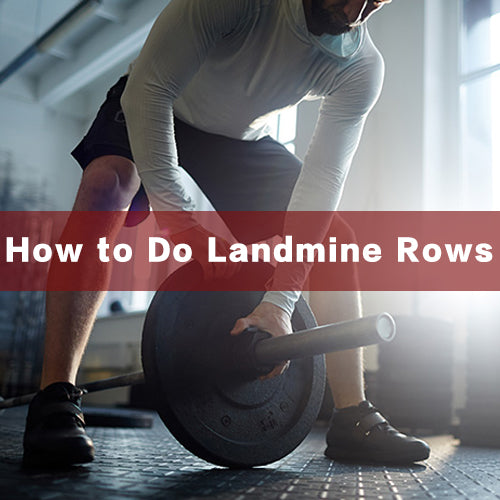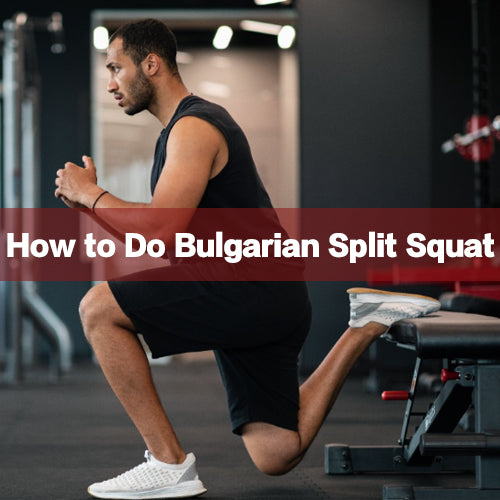
The single-leg deadlift is a dynamic and versatile exercise that forms an essential part of many fitness routines, from strength training to functional fitness. This exercise targets various muscle groups, improves balance and stability, and can be adapted to suit different fitness levels. In this comprehensive guide, we'll explore the correct form and technique for the single-leg deadlift, its numerous benefits, and a variety of effective variations to incorporate into your workout routine.
What is a Single Leg Deadlift?
The single-leg deadlift, also known as the single-leg Romanian deadlift, is a compound exercise that primarily targets the muscles in your hips, glutes, hamstrings, lower back, and core. Unlike the traditional two-legged deadlift, this exercise is performed on one leg, which requires greater balance and stability. It mimics the movement of picking up an object from the ground with one leg raised, making it a functional exercise with real-world applications.
How to Do Single Leg Deadlift?

To perform the single-leg deadlift correctly and minimize the risk of injury, follow these steps:
Equipment Needed: You can perform the single-leg deadlift with a dumbbell, kettlebell, barbell, or just your body weight.
Starting Position: Begin by standing with your feet hip-width apart and your chosen weight held in one hand, typically in the opposite hand to the working leg. Your other hand can be placed on your hip or extended out to the side for balance.
Balance Leg: Lift one leg off the ground, keeping it straight and in line with your torso. This will be your balance leg throughout the exercise.
Hinge at the Hips: With a slight bend in the standing knee, hinge at your hips, pushing your hips backward while keeping your back straight. Your raised leg should move in tandem with your torso to maintain balance.
Lower the Weight: As you hinge forward, lower the weight towards the ground while maintaining a neutral spine. Your back should remain straight, and your chest should be parallel to the ground.
Stretch and Return: Lower the weight until you feel a stretch in your hamstrings, and your torso is parallel to the ground. At this point, your raised leg and your upper body should be in line with each other.
Return to Standing: Engage your glutes and hamstrings to lift your torso back up to a fully upright position, returning to the starting position.
Repeat: Perform the desired number of repetitions on one leg before switching to the other.
Common Mistakes
Balance Trouble: Don't wobble while doing the exercise. Focus on a spot, tighten your core, or stand near a wall for support.
Round Back: Keep your back straight; don't hunch over. Imagine your chest is up, shoulders back.
Bending Back Too Much: Don't arch your lower back too far. Stand tall without over-arching.
Using Too Heavy Weights: Start with lighter weights to avoid bad form. Gradually increase as you get better.
Ignoring Hip Hinge: Remember, it's a hip movement, not a squat. Push your hips back as you lower.
Forgetting Core: Engage your core muscles for stability. This is important.
Jerky Movements: Move smoothly, not abruptly. Control the weight up and down.
Stay Straight: Keep your leg, hips, and shoulders in line. Don't lean too far.
Control the Downward Move: Lower the weight gently; don't drop it. Use your hamstrings and glutes.
Work on Flexibility: Stretch to improve leg and hip flexibility. It helps with the exercise.
Neck Position: Keep your neck relaxed. Don't crane it upwards.
Warm-Up: Always warm up before you start. This prevents injuries.
By avoiding these mistakes, you can do the single-leg deadlift safely and effectively. Start with light weights, practice good form, and gradually increase the challenge as you get better.
Single Leg Deadlift Muscles Worked

The single-leg deadlift is a compound exercise that engages multiple muscle groups in the body. Here are the primary muscles worked during a single-leg deadlift:
Glutes: The gluteus maximus is heavily engaged during this exercise, especially during the hip extension phase.
Hamstrings: The hamstrings work eccentrically to control the lowering phase of the single-leg deadlift and concentrically to extend the hip during the upward phase.
Quadriceps: The quadriceps are responsible for extending the knee and straightening the leg during the lifting phase.
Lower Back (Erector Spinae): The erector spinae muscles play a vital role in maintaining proper spinal alignment and stability during the exercise.
Core Muscles: The core muscles, including the rectus abdominis, obliques, and transverse abdominis, work to stabilize the torso and prevent excessive rounding or arching of the back.
Calves: The calf muscles provide stability and support during the exercise, especially when rising onto the toes.
Adductors: The inner thigh muscles, or adductors, help stabilize the hip joint during the movement.
Hip Flexors: The hip flexors are stretched and engaged to a certain extent as you hinge at the hips.
Single Leg Deadlift Benefits
Incorporating the single-leg deadlift into your workout routine can yield numerous benefits:
Lower Body Strength: This exercise targets the glutes, hamstrings, and quadriceps, helping to build strength and muscle in the lower body.
Improved Balance and Stability: Balancing on one leg forces your stabilizer muscles and core to work harder, enhancing your overall balance and stability.
Functional Fitness: The single-leg deadlift mimics real-life movements, such as picking up objects or ascending stairs, making it a valuable exercise for improving daily activities.
Reduced Muscle Imbalances: Working each leg independently can help identify and correct muscle imbalances, reducing the risk of injury.
Enhanced Core Strength: To maintain balance, your core muscles, including the rectus abdominis and obliques, are actively engaged throughout the exercise.
Lower Back Health: This exercise strengthens the muscles in the lower back, promoting better spinal support and reducing the risk of lower back pain.
Flexibility: The single-leg deadlift also improves flexibility in the hamstrings and hip flexors.
Single Leg Deadlift Variations
To keep your workouts challenging and avoid plateaus, consider incorporating these single-leg deadlift variations:
Dumbbell Single Leg Deadlift

Hold a dumbbell in the opposite hand of the working leg to add resistance.
Kettlebell Single Leg Deadlift

Similar to the dumbbell variation, but using a kettlebell for added instability.
Barbell Single-Leg Deadlift

Perform the exercise with a barbell, either in the rack or with free weights. This variation allows for heavier loads.
Banded Single Leg Deadlift

Attach resistance bands to your working leg for additional resistance. This is an excellent option for home workouts.
Single Leg Deadlift to Reverse Lunge

The single-leg deadlift to reverse lunge is a dynamic exercise that enhances balance, leg strength, and overall lower body stability. It involves a combination of a single-leg deadlift and a reverse lunge, making it a comprehensive movement for developing strength and coordination.
Pistol Squat

The pistol squat is a challenging single-leg bodyweight exercise that targets your leg muscles, especially the quads, hamstrings, and glutes. It's known for its effectiveness in building lower body strength, balance, and flexibility. Unlike traditional squats, the pistol squat requires you to balance on one leg while lowering your body, making it a demanding yet rewarding exercise for leg development and functional fitness. Here's how to do a pistol squat step by step:
- Stand on one leg
- Keep the other leg extended in front
- Lower your body as far as you can while balancing
- Use your arms for balance if needed
- Push back up to the starting position
- Repeat on the other leg
Single-Leg Deadlifts With Jump
After completing the single-leg deadlift, explode into a jump from the single-leg stance. This adds a plyometric element to the exercise.
Single-Leg Deadlift Overhead Press
Incorporate an overhead press with a dumbbell or kettlebell at the top of the single-leg deadlift for a full-body challenge.
These variations offer different levels of difficulty and can be tailored to your fitness level and goals. Be sure to start with the basic single-leg deadlift and gradually progress to more advanced variations as you build strength and stability.
Conclusion
The single-leg deadlift is a versatile and effective exercise that offers numerous benefits, including improved lower body strength, enhanced balance, and increased stability. Whether you're a beginner or an advanced athlete, there's a variation of the single-leg deadlift that suits your fitness level and goals.
Incorporate these variations into your workout routine to keep things interesting and challenging. Remember to focus on proper form and technique to maximize the effectiveness of the exercise and minimize the risk of injury.


